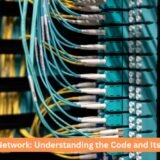Fix Error: errordomain=nscocoaerrordomain&errormessage=could not find the specified shortcut.&errorcode=4
Introduction to the Error
Errors that appear during software usage often confuse users because they come with technical codes and descriptions that are not always clear. One such error that frequently appears on macOS and iOS devices is: errordomain=nscocoaerrordomain&errormessage=could not find the specified shortcut.&errorcode=4. This error usually shows up when the system or an application is trying to access a shortcut, file, or resource that no longer exists or cannot be found in its expected location. While it may seem complicated, understanding the root cause of this error and how to fix it can help users avoid frustration and restore smooth operation on their devices.
This article takes an in-depth look at what this error means, why it occurs, its impact on users, and various solutions to resolve it. By breaking down the terminology, analyzing common triggers, and offering practical fixes, we can turn a confusing error code into a manageable issue.
What Does the Error Mean?
When you see the error message errordomain=nscocoaerrordomain&errormessage=could not find the specified shortcut.&errorcode=4, it is essentially telling you that a shortcut or link the system is trying to use cannot be located. To understand this better, it helps to break down the terminology:
The “Error Domain” Explanation
In Apple’s development environment, an “error domain” is a way of grouping related errors. The NSCocoaErrorDomain is a common error domain used within Cocoa, the framework on which macOS and iOS applications are built. Errors that fall under this domain are usually related to file handling, data persistence, or application resource management.
The “Error Message” Component
The part of the error message that says “could not find the specified shortcut” indicates the problem. The system was looking for a shortcut, which could mean a file alias, a keyboard shortcut, or a resource reference, but it wasn’t found where it was expected. This is a pointer to a missing or broken link between the system and its resources.
The “Error Code” Meaning
The errorcode=4 is a numerical identifier. In most cases, lower-level error codes like this one help developers trace the exact failure point. In this context, error code 4 often signals a “file not found” type of situation, reinforcing the idea that the system was unable to retrieve a specific shortcut.
Common Causes of the Error
Understanding why this error occurs can help users and developers troubleshoot more effectively. Several factors may contribute to the occurrence of errordomain=nscocoaerrordomain&errormessage=could not find the specified shortcut.&errorcode=4:
Missing or Deleted Files
If a shortcut points to a file or application that has been deleted, renamed, or moved, the system cannot resolve the path. This is the most common cause behind the error.
Corrupted Shortcut References
Sometimes shortcuts themselves become corrupted. For example, if a system update or software crash alters the way shortcuts are stored, they may no longer point to the correct resources.
Application or System Updates
After major updates, certain file paths or resource locations may change. This can leave behind shortcuts that no longer match the system’s new structure, resulting in the error.
Permissions Issues
In some cases, the shortcut may exist, but the user or the application does not have sufficient permission to access it. macOS is known for strict file system permissions, and restrictions can easily trigger errors like this one.
How the Error Affects Users
While the error may appear technical, its real-world implications are quite straightforward. Users experiencing this issue might encounter several inconveniences:
Interruptions in Workflow
If the shortcut in question is tied to an important file or frequently used application, the error can disrupt daily productivity.
Inability to Open Applications or Files
Sometimes this error directly prevents the opening of certain apps or documents. If a system shortcut is broken, it might even affect the launching of system utilities.
Confusion for Non-Technical Users
The language of the error — especially the long string errordomain=nscocoaerrordomain&errormessage=could not find the specified shortcut.&errorcode=4 — is not user-friendly. Many users panic when they see such a message without knowing it is often a simple fix.
People Read Also: What Is Vezgieclaptezims? Exploring the Meaning Behind This Mysterious Concept
Got it — you’d like me to expand on detailed solutions for fixing the error:
errordomain=nscocoaerrordomain&errormessage=could not find the specified shortcut.&errorcode=4
Here’s a comprehensive list of practical solutions, explained step by step, so both non-technical users and advanced users can follow them.
Solutions to Fix the Error
- Restart Your Device
- Many temporary issues in macOS or iOS resolve with a restart.
- Restart clears cached resources and re-establishes file paths.
- Hold down the power button, restart, and check if the error persists.
- Recreate the Missing Shortcut
- If you deleted or moved a file that the shortcut refers to, the system cannot locate it.
- Navigate to the original file or application and create a new shortcut.
- On macOS: Right-click the file → Select Make Alias → Move the alias to the desired location.
- On iOS (if applicable): Re-add the shortcut through the Shortcuts app.
- Delete the broken shortcut that is triggering the error.
- Check File or Folder Permissions
- Sometimes the file is present but restricted due to permissions.
- To fix this:
- Locate the file/folder in Finder.
- Right-click and choose Get Info.
- Scroll to Sharing & Permissions.
- Ensure your account has Read & Write access.
- Apply changes and retry opening the shortcut.
- Update macOS or iOS
- Apple often releases bug fixes for system errors.
- On macOS: Go to System Settings → General → Software Update.
- On iOS: Go to Settings → General → Software Update.
- Install any available updates and restart your device.
- Reinstall or Update the Application
- If the error appears only in one app, that app may have broken shortcut references.
- Delete the app and reinstall it from the App Store.
- Ensure you’re using the latest version to avoid compatibility issues.
- Use Disk Utility (macOS only)
- Disk Utility can repair issues with the file system that might cause shortcut errors.
- Steps:
- Open Disk Utility from Spotlight or Applications → Utilities.
- Select your main drive.
- Click First Aid and run the repair.
- Restart after the process is complete.
- Clear System Cache
- Cached data sometimes confuses the system about resource locations.
- On macOS:
- Open Finder.
- Press Shift + Command + G.
- Type ~/Library/Caches and delete unnecessary cache folders.
- Restart your device.
- Check the Shortcut App (iOS specific)
- If using Apple’s Shortcuts app:
- Open the app and check if the shortcut still points to a valid app or file.
- Rebuild or reconfigure the shortcut if the linked resource was deleted or moved.
- Restore from Backup
- If a critical system or app shortcut is missing, restoring from a backup may be the simplest fix.
- Use Time Machine on macOS or iCloud Backup on iOS.
- Restore the system or app files to their previous working state.
- Contact Apple Support
- If none of the above solutions work, the issue may be system-level or related to deeper software corruption.
- Reach out to Apple Support or visit a Genius Bar for professional assistance.
✅ By following these steps, users can usually resolve the errordomain=nscocoaerrordomain&errormessage=could not find the specified shortcut.&errorcode=4 issue without advanced technical knowledge.
Read Also: PSNBounty.org: A Comprehensive Guide to the Platform





























































